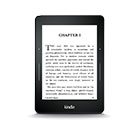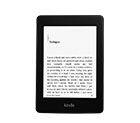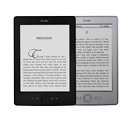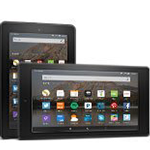| about • contact | dictionaries • help | ||||||||||||||||||||||||||||||||||||||||||||||||||
|
|||||||||||||||||||||||||||||||||||||||||||||||||||
|
|
Intangible Press help Frequently Asked Questions (F.A.Q.) on Kindle Dictionaries 1. How do dictionaries work on Kindle? 2. What Kindle models and Kindle apps
are the dictionaries compatible with? 3. How do I set my default dictionary? 4. When I press Enter to select the dictionary
as default, nothing happens. 5. Why does the dictionary only translate one
way? 6. Can I use a different keyboard to search for words in the dictionary? 7. I have set the dictionary as default, but when
I try to look up words, nothing happens. 8. Why can't I look up any word in my eBook? How do dictionaries work on Kindle?There are two ways of using a dictionary on Kindle devices. (Please
see below for more details on compatibility
and dictionary settings for your particular model of
Kindle.) First, you can set it as your default
dictionary (also called primary dictionary in early models). Once you have done this, you can select a
word for lookup and view its definition in a pop-up window without leaving
the book you’re reading. Second, you can type words in the search dictionary box.
You need to access the dictionary directly from your Kindle’s Library in
order to use this feature. On a Kindle, the box will appear at the bottom of the screen;
on a Kindle Oasis, Kindle Voyage, Kindle Paperwhite, Kindle Fire, or Kindle app, click on the magnifying glass icon to bring up the search
interface. You can input a word and go directly to its
entry. You can also browse through the full list of words included in the dictionary. To do this, go to the Table of Contents and select the "A-Z" link. What Kindle models and Kindle apps are the dictionaries compatible with?Kindle Devices: Our dictionaries are generally compatible with 2nd generation and newer
Kindles, and Kindle Fires with Fire OS 4 or higher. As some languages (eg, Russian) have more limited compatibility, please refer to the product description for your dictionary for details. Kindle Apps: Dictionary search via keyboard input is supported on the Kindle for iPad, Kindle for iPhone, Kindle for Android, Kindle for Mac, and Kindle for
PC. To search in one of these apps, open the dictionary from your
Library, and then click on the magnifying glass icon to bring up the search
interface. In contrast to Kindle
devices, this search will only display words matching the term you enter,
rather than show the full list of dictionary words as you type. Default dictionary selection is currently supported in Kindle for iPad and Kindle for iPhone (version 4.0 and higher) and Kindle for Android (version 4.0 and higher), but not in Kindle for Mac or Kindle for PC. Dictionary features are not supported in Kindle Cloud Reader.
How do I set my default dictionary?In Kindle for iOS, Kindle for Android, or Kindle Fire (Fire OS 4+),
perform the following steps:
Tap on a word to look it up. When the Dictionary pop-up window appears,
you will see a button with either the name of the current default dictionary
or the text "Change Dictionary". Tap on this button to bring up the list of
available dictionaries, then select the dictionary you want to use as default
from the list. On a 4th
generation or later Kindle, Kindle Oasis, Kindle Paperwhite, or Kindle Voyage,
perform the following steps: Press the Home key. At the Home screen, select Menu, then Settings. At the Settings screen, the next step will depend on your device:
In the Dictionaries list, you can select a default dictionary for each language for which you have multiple dictionaries. For example, if you have dictionaries for English, Spanish and German, you will see these languages listed along with the current default dictionary for each. (If you only have one dictionary for a particular language, it is pre-selected as default and there is nothing you need to do.) When multiple dictionaries are available for a particular language, either a right arrow or the text “change default” will be displayed in the right margin. To change the current selection on Kindle Oasis, Kindle Voyage, Kindle Paperwhite, or Kindle Touch, tap on it; to change it on a non-touch screen Kindle, select it with the navigation key, then press OK. A list of available dictionaries for that language will be displayed. Select the dictionary you want to use as default, then select OK. In 2nd & 3rd
generation Kindles, perform the following steps: Press the Home key. At the Home screen, select Menu, then Settings. At the Settings screen, press Menu again, then select Change Primary Dictionary. In the Dictionaries list, you can select a default dictionary for lookup. Highlight the dictionary you want to use, and then press OK. Note: The dictionary you
select will only look up words for eBooks tagged in the same language. For
example, if you highlight a word in an eBook tagged as German, you will only
be able to use a dictionary that is tagged as German. See the description of
your specific eBook(s) to verify this information. When I press
Enter to select the dictionary as default, nothing happens.
In 4th generation and later Kindles, Kindle Oasis, Kindle Voyage, Kindle Paperwhite, and
Kindle Touch, if you only have one dictionary for a particular language, there is
nothing for you to do. The dictionary displayed is pre-selected as the
default for the corresponding language. Why does the dictionary only translate one way?It is the way the Kindle eBook reader is
designed. Amazon only allows publishers to define a single direction for word
lookup in an eBook, which means a single-volume print bilingual dictionary
must be offered as two separate eBooks in the Kindle Store. For example, if a
print bilingual dictionary contains both German-English and English-German
sections, we make it available as two eBooks for Kindle: a German-English
dictionary for lookup of German words and an English-German dictionary for
lookup of English words. Can I use a different keyboard to search for words in the dictionary?Yes, you can do this on Kindle Oasis, Kindle Voyage, and Kindle Paperwhite. From the Home screen, bring up the Menu and select Settings. Select "Language & Dictionaries", then "Keyboards". Choose the keyboard for the language in which you'll be searching for words (for instance, if you have a Russian-English dictionary, you should select "Russian" here). Note that you may need WiFi access to download your keyboard, depending on the language. Once you have activated the keyboard, open your dictionary from the "Dictionaries" folder in your Library. Tap on the magnifying glass icon to bring up the search. Once you see the keyboard on screen, tap on the Globe icon next to the space bar until you see the keyboard you want to use. Pressing it repeatedly will cycle through all active keyboards on your device, allowing you to return to its default keyboard. I have set the dictionary as default, but when I try to look up words, nothing happens.There may be a few reasons for this behavior. a. First, check that you are trying to look up words in the supported
language. The dictionary you select will only look up words with eBooks
tagged in the same language. For example, if you highlight a word in an eBook
tagged as Spanish, you will only be able to use a dictionary that is tagged
as Spanish, such as a Spanish-English dictionary. Conversely, if have an English-Spanish
dictionary, you can only use it to look up words in an English eBook. See the
description of your specific eBook(s) to verify this information. b. If you still have a problem, it may be that the language of your
eBook (German, Spanish, etc.) is incorrectly defined as English. The publisher sets this language attribute.
If this is the case, your Kindle will treat your eBook as being written in
English and attempt to look up words (German, Spanish, etc.) in an English
dictionary regardless of the primary dictionary selected (for the
corresponding language). NOTE: Dictionary look-up should usually work
correctly with eBooks purchased from Amazon, as long as "German
Edition", “Spanish Edition”, etc. is present in the eBook title/description.
However, we are aware that some Amazon eBooks and eBook samples do not have
their language encoded correctly. Please contact Amazon Customer Service if
you are unsure about the language of your eBook(s). If you are unable to look up words in an eBook with one of our
dictionaries, you can try looking up words in an eBook we have verified as
correctly encoded. If you are able to look up words successfully in the
appropriate eBook below, it means the dictionary is working correctly on your
Kindle, and the language of your eBook is probably incorrectly encoded. For
German dictionaries: Here
is a free edition of a correctly encoded German eBook if you'd like to rule out
the dictionary as the source of the problem. For
Spanish dictionaries: Here is a free edition of a
correctly encoded Spanish eBook if you'd like to rule out the dictionary as
the source of the problem. c. In some Kindle models where the default dictionary feature is
supported, this feature may not work as intended with earlier versions of the
Kindle software. We recommend that you
update to the current version of the Kindle software for your model. Please go to the Kindle
Software Updates page and follow the instructions to update to the latest
version. d. If you are still having a problem, please email us at techsupport@intangiblepress.com.
When you send the email, please include the following information: Kindle
Model (Paperwhite, DX, etc.); Kindle Software Version (available either at bottom of Menu
> Settings screen or Settings > Menu > Device Info); Dictionary Title and Date of Purchase; the Title of
the eBook (from which you were unable to look up words). We'll do our best to
help diagnose the cause of the problem. Why can't I look up any word in my eBook?There may be a few reasons for this behavior. a. Words that are not in the dictionary will not be found. Just like when you buy a print dictionary, the words contained in the dictionary correspond to the size of the volume. For example, it is easy to see the difference when comparing the print versions of a standard and an Unabridged dictionary; the Unabridged is significantly larger. The Collins dictionaries we offer are among the largest in the Collins line. Additionally, certain word types like proper names, technical jargon, or words that are short-lived (like invented words or slang) probably won't be there. b. Certain Kindles have a built-in list of words
considered too common to look up. There is also a specific list for each
language. For example, in Spanish, words like "me", "y",
"había" and "a" are on the list.
In English, words like "the", "that", "are", "has", "a", and
"an" are on the list. When you try to select a word on this list,
you will be unable to
look it up. Of course, if the word is in your dictionary, it
is always possible to go into the dictionary and look up the word
directly. This may be inconvenient,
but it is the best solution we can offer for this problem until the behavior
is standardized across the Kindle product line. The Kindle behavior of
blocking lookup of common words while reading may make sense for a native
speaker, but not necessarily for a language learner. We recommend that you contact Amazon
Customer Service to request that this functionality be supported consistently
across the Kindle product line. NOTE: If you find a problem with a particular word that
you do not think would be too common to search for or is actually in the
dictionary you purchased, please let us know. There may be another issue
making this happen. Please email us at techsupport@intangiblepress.com. When you send the email, please include the following information:
Kindle Model (Paperwhite, DX, etc.); Kindle Software Version (available at bottom
of Menu > Settings screen or Settings > Menu > Device Info); Dictionary Title and Date of
Purchase; the Title of the eBook (from which you were unable to look up words). We'll do
our best to help diagnose the cause of the problem. When I look up a word, why does the definition that appears in the pop-up window run into the next dictionary definition?For the 2nd and 3rd
generation devices, it is the way the Kindle eBook reader is designed.
Individual publishers are unable to change this. NOTE: This behavior has been improved in the 4th
generation and later Kindle devices. You only see the definition/translation for the word you
selected in the pop-up window.
|
|
|||||||||||||||||||||||||||||||||||||||||||||||||










